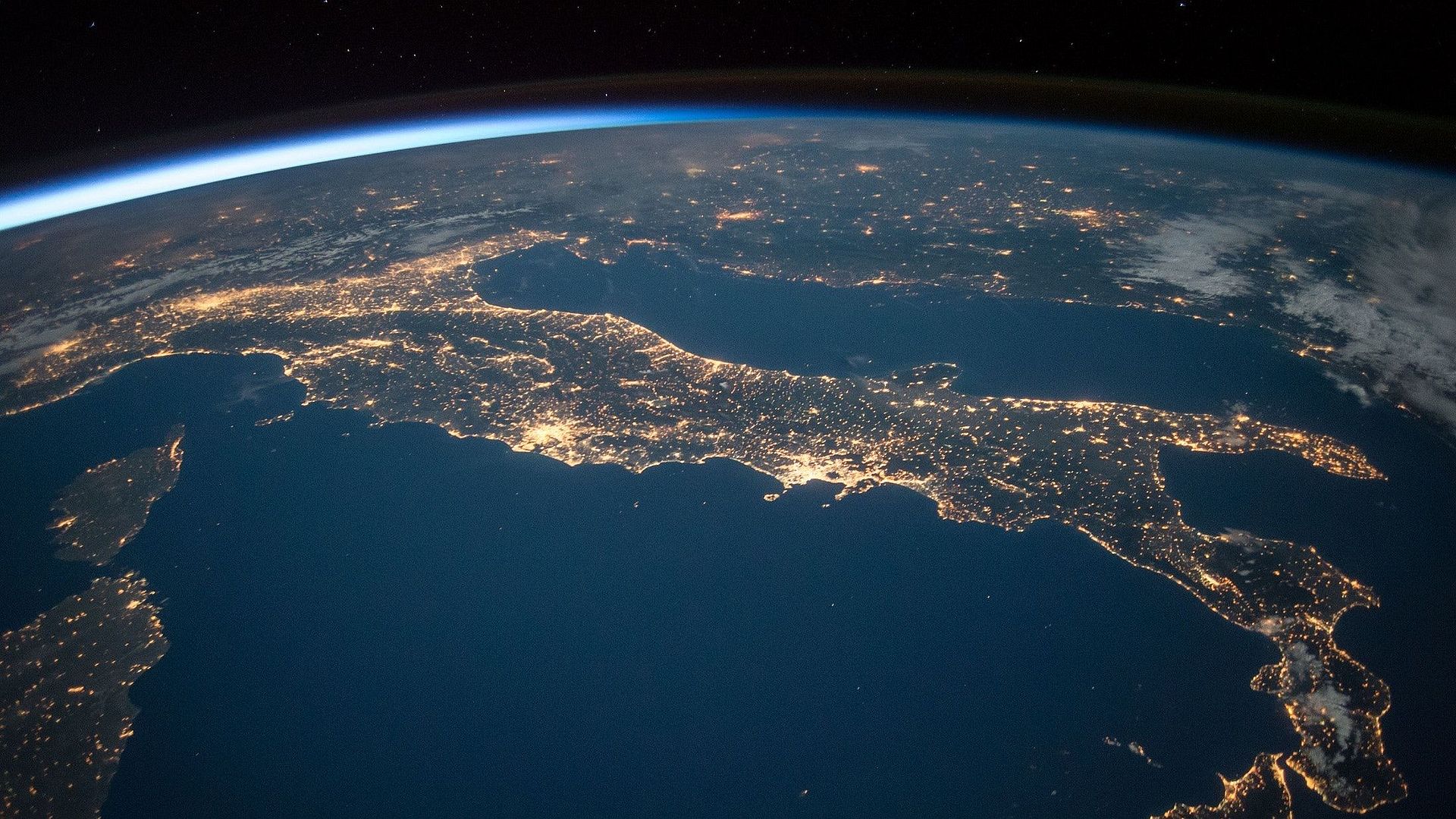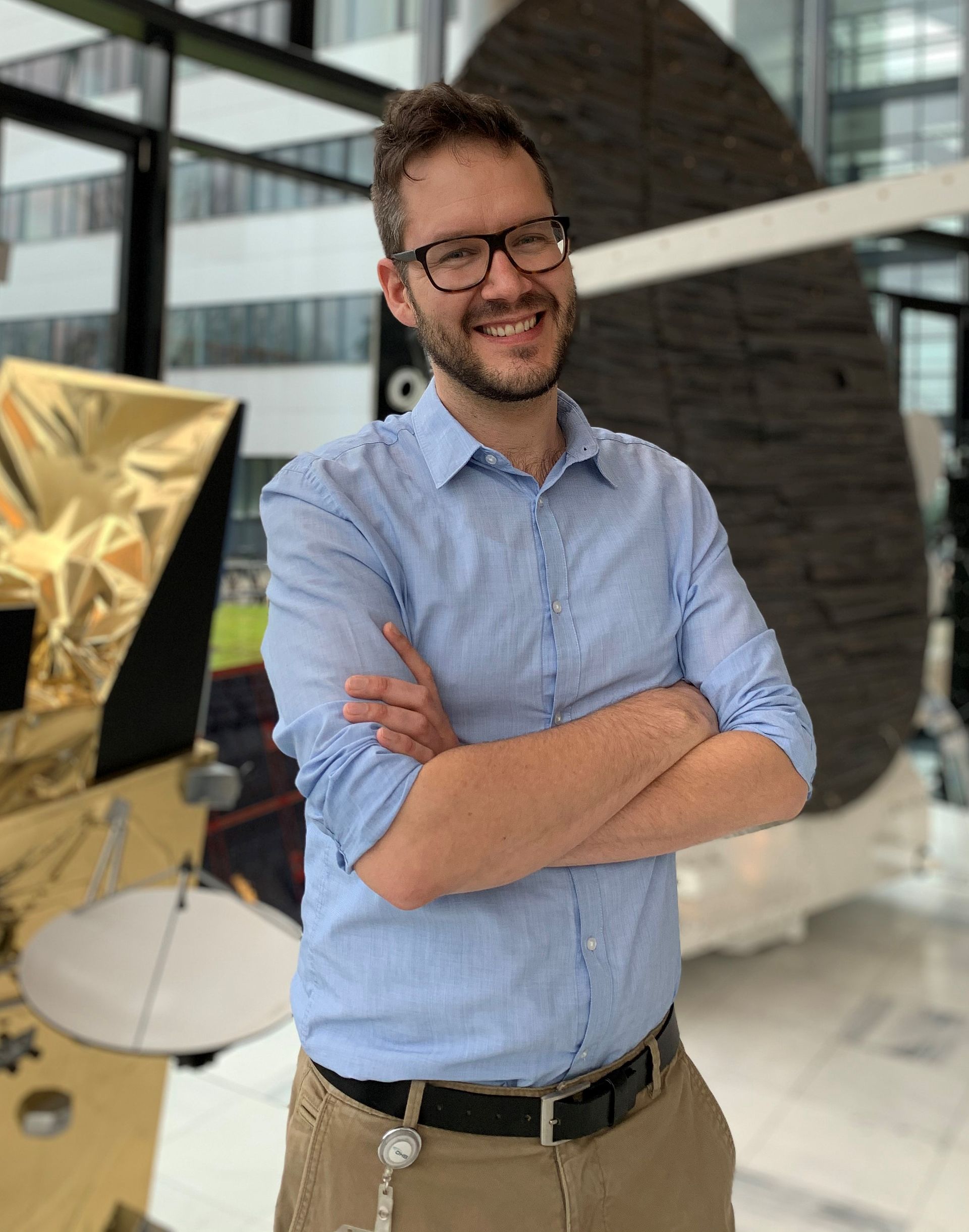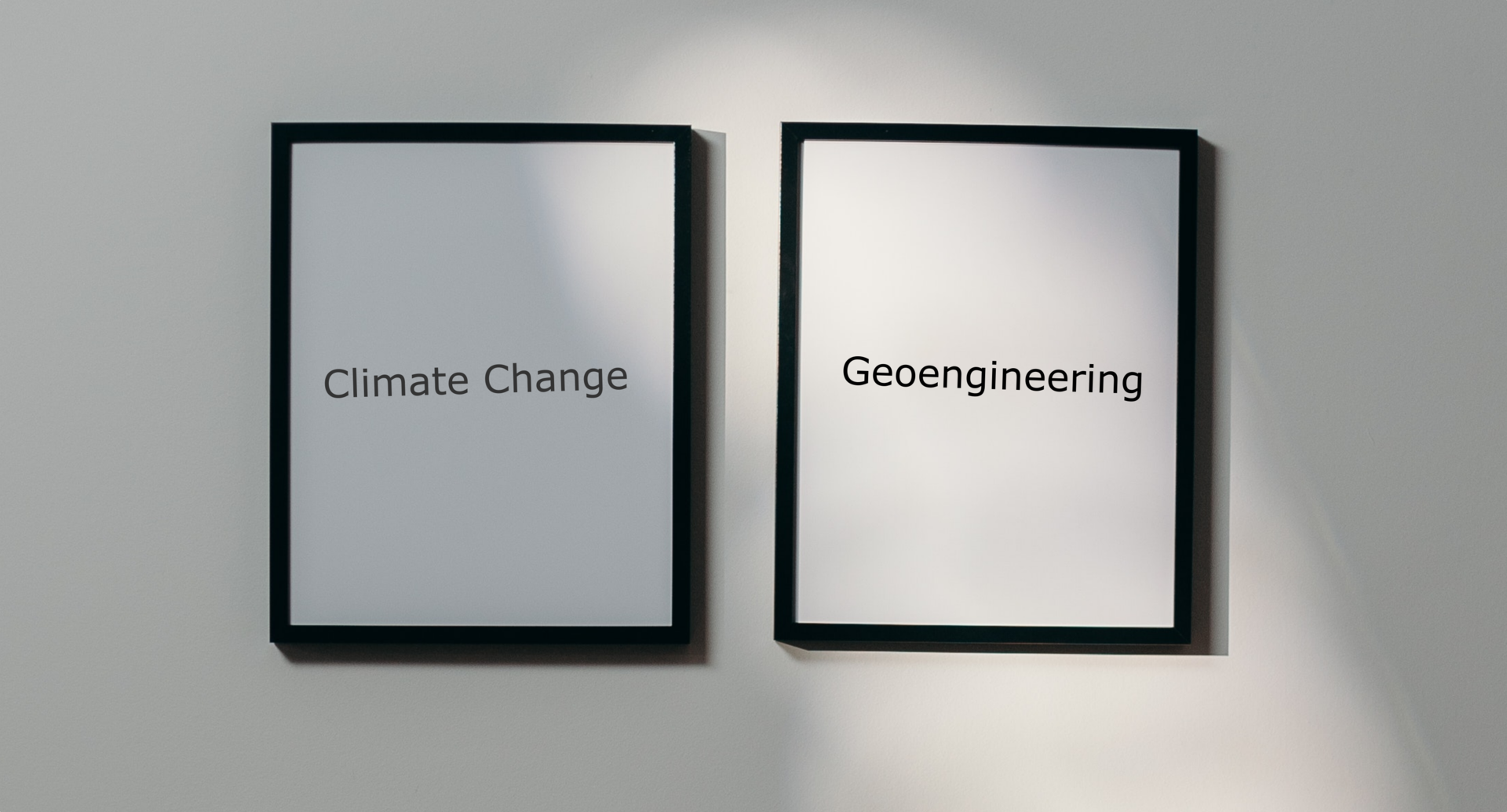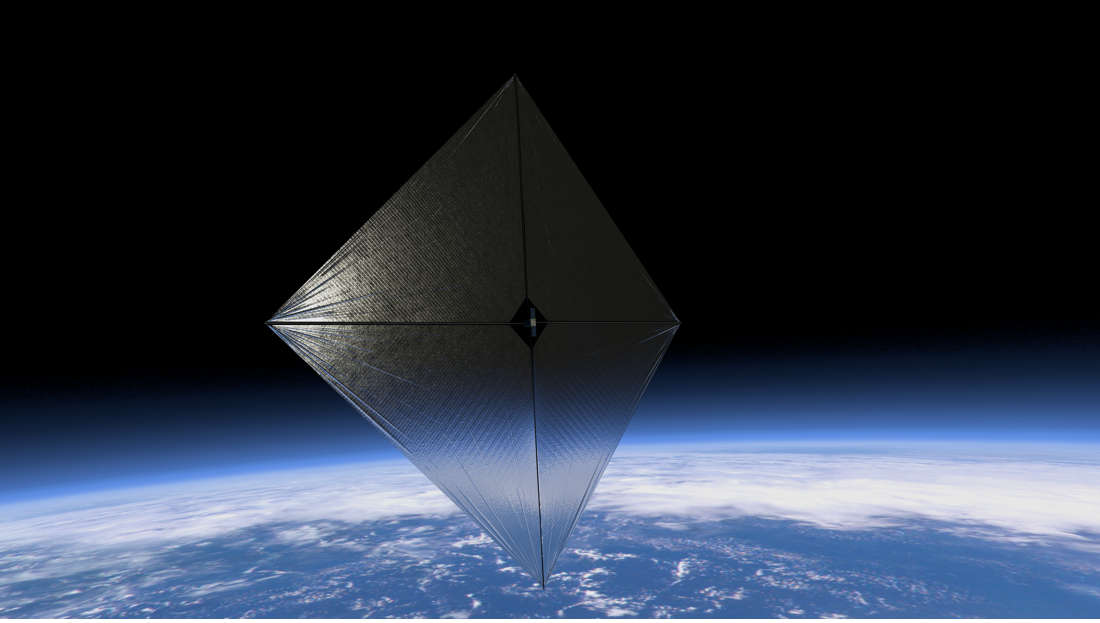Mr. Hamann, how did OHB - an aerospace company - come to conduct a study on geoengineering?
Tomas Hamann: In February 2019, OHB hosted an in-house innovation forum. At this event, employees from a wide range of departments were able to bring their ideas to the table and discuss them freely. My group's idea was to address the increasing threat of climate change by developing a spacecraft that could be placed at Lagrange Point 1 between the Sun and the Earth, where it would act as a sunshade. This idea was very well received and eventually won. We received funding for 100 hours of work to further elaborate the concept.
What did this further elaboration of the idea look like?
We conducted a classic literature study. We read all the scientific papers we could find on the subject. From this, we then created a somewhat more detailed mission concept. However, it also quickly became clear to us that there are many other potential ways to specifically influence the climate on Earth besides sunshades in space.
What happened then?
At the end of our 100 hours of work, we presented our results to Marco Fuchs, the CEO of OHB. He was very enthusiastic about the topic. Especially about possibly finding a Plan B for dealing with climate change. In the long term, of course, greenhouse gas emissions must be reduced, but what if climate change gives us too little time to do that? Catastrophic damage to our planet could be avoided and extra time could be made available by implementing geoengineering. After having completed our initial study, we received another 800 hours of work to compare our space-based idea with other geoengineering concepts and detail our concept even more.
In the long term, of course, greenhouse gas emissions must be reduced, but what if climate change gives us too little time to do that?
With what goal in mind?
There is no concrete business idea behind this investigation. It is more about finding out what contributions space technology can make in the fight against climate change. Of course, satellites already provide important data on the climate and its changes, but perhaps space technology can also be used specifically to mitigate the effects of climate change until humanity has found ways to meet its energy needs without fossil fuels.
What other geoengineering concepts are there?
There are countless ideas. However, for practical reasons, we have decided to concentrate on the five best-studied concepts. We chose these concepts because they seem to be popular choices, partially due to their feasibility. The approaches of the various concepts are quite different. For example, there is the idea of injecting aerosols into the stratosphere so that less sunlight reaches the ground. Other authors are concerned with the question of whether the reflectivity of the Earth's surface can be changed over a large area so that more sunlight is radiated back into space. Closely related to this approach is the idea of using seawater to create artificial and more reflective clouds. However, what these methods have in common is that they do not change the fundamental problem; the amount of greenhouse gases in the atmosphere remains unchanged. This means that only the symptoms, but not the causes of climate change, are counteracted. Our space-based approach also has this catch. The situation is different for geoengineering methods that actively remove carbon dioxide from the atmosphere. These include the capture and storage of greenhouse gasses using special technologies, but also less technological solutions. Planting large amounts of trees to absorb CO2 is a proposed idea. What is important here is that the carbon dioxide must not only be removed from the atmosphere, but also taken out of the carbon cycle for a long time.
What does this look like in practice?
To achieve a positive effect, the captured CO2 must be kept out of the atmosphere for a long time. When storing captured CO2, for example in empty oil wells, the carbon is returned to where we obtained it in the first place. Sealing is of great importance to avoid the CO2 from returning to the atmosphere. For CO2 removal by planting trees, burning and rotting of trees results in the CO2 being reintroduced into the atmosphere. There are different techniques available to avoid this, such as harvesting the trees and storing them.
Can geoengineering be a solution to the climate crisis?
No, first and foremost we have to find alternatives to fossil fuels - and better today than tomorrow. I would prefer to see climate change being approached by greenhouse emission reduction than by geoengineering. Geoengineering should be used to buy time since it always has side effects that we are far from understanding. Next to this, it is better to solve the issue at the source instead of trying to fix the side-effects. We need to be aware that humans have been adapting the Earth to their needs for thousands of years. We have not lived in nature for a long time. Ultimately, our modern way of life has been altering our climate. Geoengineering basically wants to alter the climate in the right direction but does not provide a perfect sustainable fix.
We need to be aware that humans have been adapting the Earth to their needs for thousands of years. We have not lived in nature for a long time. Ultimately, our modern way of life has been altering our climate.
Will the topic of geoengineering be pursued further at OHB?
On December 3, we held a workshop at which we presented our findings to scientists with research interests in the fields of environmental physics and climatology. A fruitful discussion has developed from this. We are planning to expand our investigation by working together with academia focussing on different fields such as atmospheric physics, engineering, and ethics. A consortium of seven different organisations from 5 different countries is being set-up to investigate the topic in more detail. Equally important, however, is the exchange with the general public. There is now an awareness of the threat posed by climate change, but geoengineering is a topic that many people have little knowledge about. There are also still many prejudices. People don't know that we have been geoengineering for thousands of years. For this reason, we want to promote an open discussion and seek exchange with as many people as possible.
And what about the sunshade in space? Will you continue to work on that as well?
We have received funding for 1,800 additional working hours for 2021. Of course, we want to use these to further develop our mission concept. But we also want to think about how expertise from the space industry can be used in the implementation of Earth-based geoengineering projects. It would be conceivable, for example, for OHB to become involved in project management, modelling, or systems engineering of any of the other concepts. Geoengineering has to take place on a large scale, which makes the coordination of the individual steps and logistical processes highly complex. However, this is also true for large space projects and OHB has a lot of experience in solving such difficult tasks. However, this is only one of the possible scenarios. We want to think in all directions. Combating climate change is not about lobbying for one's own industry. Such a challenge can only be met through international cooperation.





